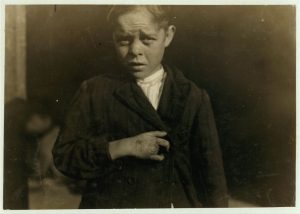Incurring a disability at work was a common occurrence of the Industrial Revolution. In this lesson, students will explore how such injuries impacted the lives of workers in an era before many public and private supports that we take for granted today. This lesson integrates disability history into a much larger 14-day unit on the Industrial Revolution. The lesson plan provides a series of activities that highlight the importance of children and adults with disabilities in 19th century workplaces, and the ways primary source photographs provide information and inspire critical questions. Resources for the teacher include:
- Primary source photos and documents with writing prompts
- Graphic organizer for semantic mapping of vocabulary and sample lesson vocabulary list
- Universal Design for Learning chart and instructions for leading lesson activities
Download or access the lesson plan online. Emerging America brings this lesson to you thanks to the resources of the Library of Congress. Aligned to Common Core and Massachusetts State History standards. Topics: Immigration, Industrial Revolution, Progressivism, Disability History




